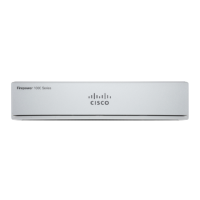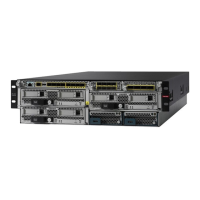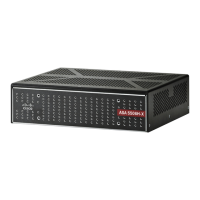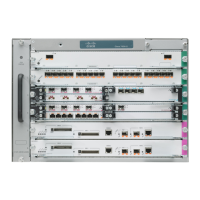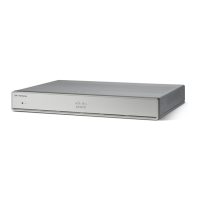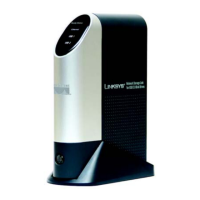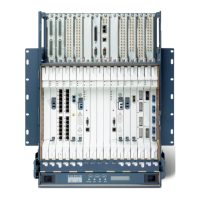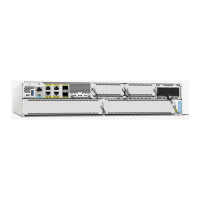115011401120Feature
Yes
On rear panel; standard rocker-type power on/off switch
The power switch controls system power and operates as a soft
notification switch that supports the graceful shutdown of the system.
Graceful shutdown reduces the risk of system software and data
corruption.
Note
Power switch
A small recessed button that if pressed for longer than three seconds resets the
chassis to its default state following the next reboot. Configuration variables are
reset to factory default. However, the flash is not erased, and no files are removed.
Reset button
One fixed AC power supply
The power supply is internal; there is no user access.
The power supply is not field-replaceable; you must return the chassis to Cisco
for power supply replacement.
AC power supply
NoRedundant power
One fixed fan
The fan is internal; there is no user access.
The fan is not field-replaceable; you must return the chassis to Cisco for fan
replacement.
Fan
One SSD slot
200-GB 2.5-in. SATA SSD drive
The drive is field-replaceable. See Replace the SSD, on page 33 for more
information.
Storage
Console Ports
The Firepower 1100 has two external console ports, a standard RJ-45 port and a USB Mini B serial port.
Only one console port can be active at a time. When a cable is plugged into the USB console port, the
RJ-45 port becomes inactive. Conversely, when the USB cable is removed from the USB port, the RJ-45
port becomes active. The console ports do not have any hardware flow control. You can use the CLI to
configure the chassis through either serial console port by using a terminal server or a terminal emulation
program on a computer.
• RJ-45 (8P8C) port—Supports RS-232 signaling to an internal UART controller. The RJ-45 console
port does not support a remote dial-in modem. You can use a standard management cable (Cisco
part number 72-3383-01) to convert the RJ45-to-DB9 connection if necessary.
• USB Mini B port—Lets you connect to a USB port on an external computer. For Linux and Macintosh
systems, no special driver is required. For Windows systems, you must download and install a USB
driver (available on software.cisco.com). You can plug and unplug the USB cable from the console
port without affecting Windows HyperTerminal operations. We recommend shielded USB cables
with properly terminated shields. Baud rates for the USB console port are 1200, 2400, 4800, 9600,
19200, 38400, 57600, and 115200 bps.
Cisco Firepower 1100 Series Hardware Installation Guide
4
Overview
Features

